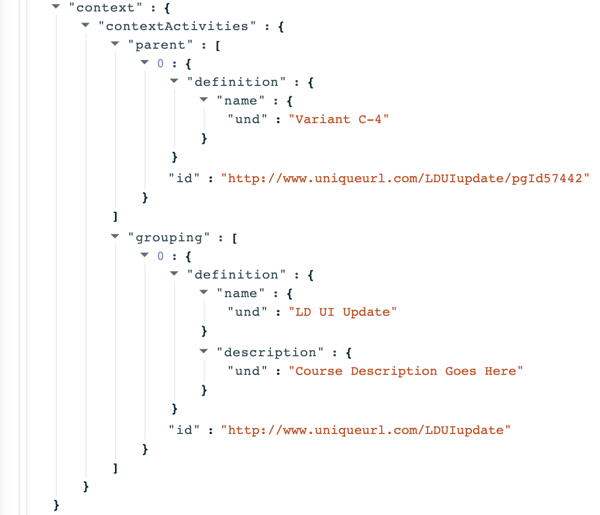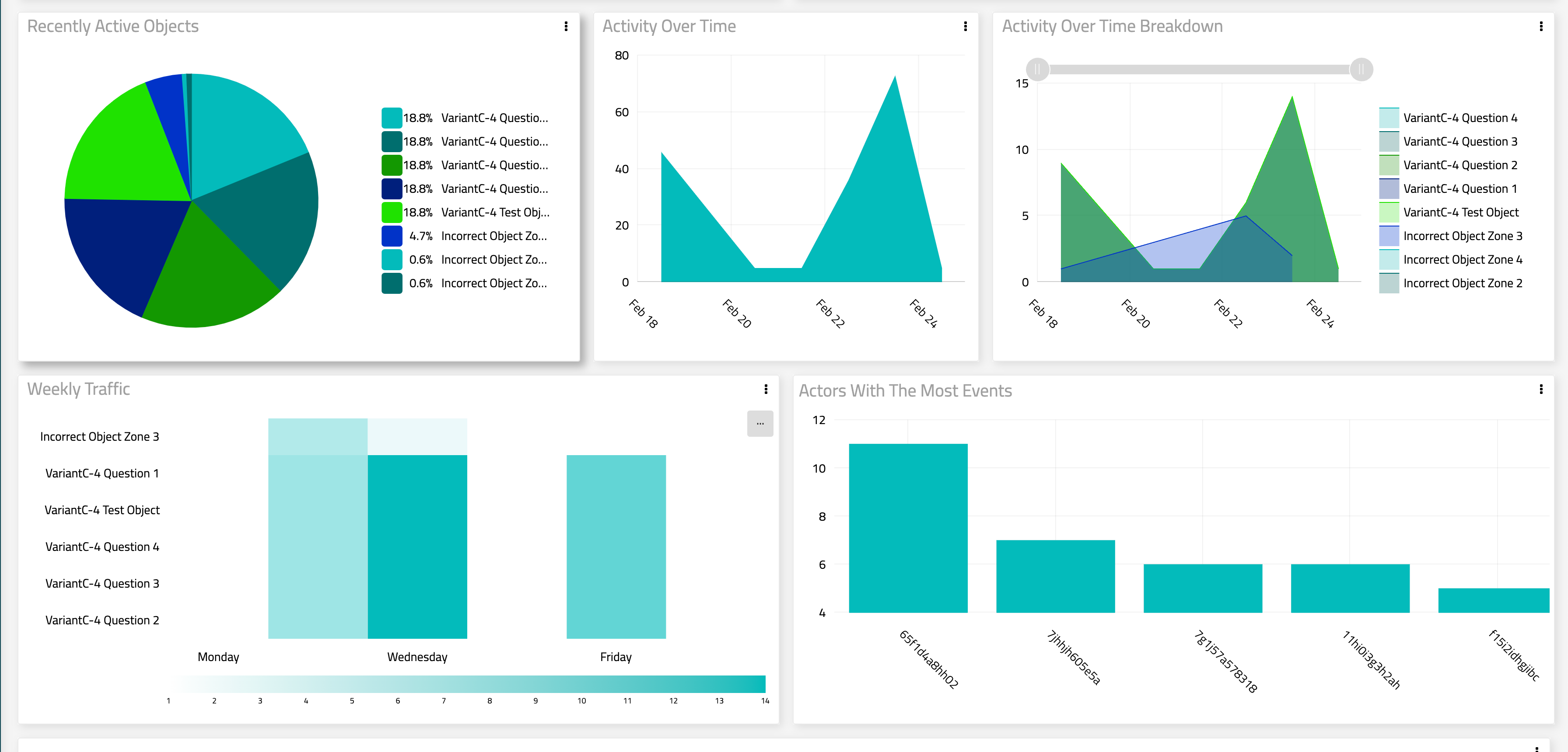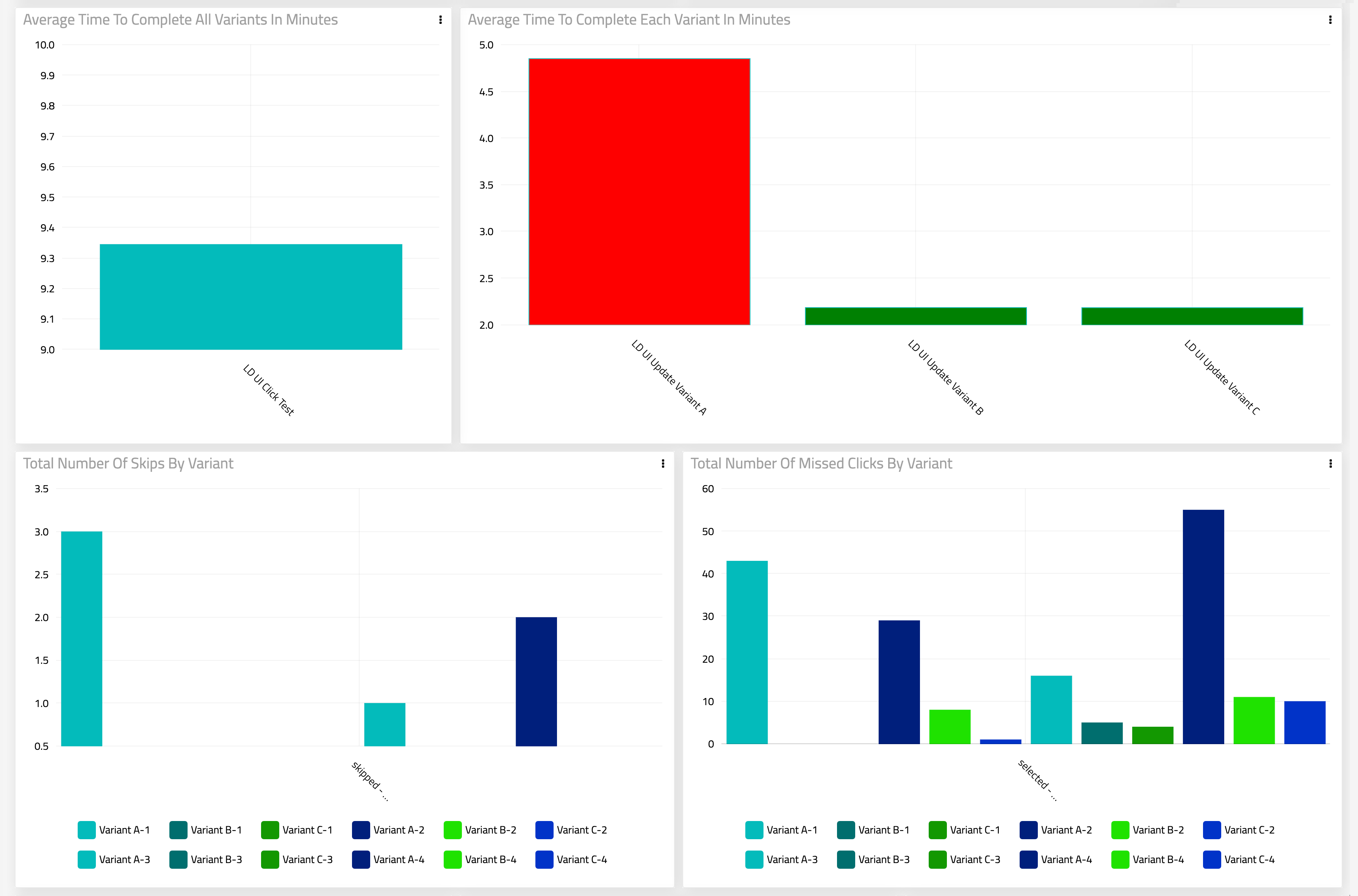Our latest authoring tool release, Lectora Desktop 21 boasts a LOT of improvements and enhancements.
Many of them are plain to see right out of the box:
- An updated UI
- New templates and file starters right in the ribbon
- Easy access to the eLearning Brothers AssetLibrary™ directly in the tool
- Automated button states
- New actions
...the list is pretty exhaustive really.
But for me, one of the most exciting feature updates we made to Lectora Desktop 21 takes place entirely behind the scenes: we updated our xAPI method to improve how Lectora handles context.

This may seem like a small change, but for data-hungry developers, it's huge.
Huge huge.
Like really, really huge.
Lectora is already the easiest to use rapid authoring tool for generating xAPI statements out of the box.
In addition to the standard Started, Completed, Progressed, and Answered statements that occur on xAPI publish, we also give you the option to quickly and easily create a custom statement, without needing to know how to craft one.
You can, of course, include a fully custom statement if you want—because Lectora gives you that power with a simple Run Javascript action—but you never need to if you don't want to.
By simply adding a statement action, then grabbing a dropdown and selecting a verb, you can get a custom statement tied to an object with no other work.
If you want to leave the object field empty, we'll pick up the name of the object your action is tied to in the Project Explorer for you; if not, enter a custom value.
That's it, really. Custom statements, with no extra work necessary—no crafting JSON statements, no post-publish surgery...just set one or two options in-tool and you're good to go!
This functionality has been around for a bit, but we tweaked what's going on behind the scenes at publish.
What we've done is improve the context of those custom statements to make detailed analytics possible so you can track every learner action you want, relative to the page on which it occurred, easily in your LRS.

And, if you have a nice visualization package on your LRS, you can generate dashboards about that data on-the-fly to get true item analysis and at-a-glance overviews of learner behavior in your course.
If you want to know exactly how many clicks a certain button received in an interaction, you can do that, easy.
If you want to know what elements Joe King viewed *inside* of an interaction—not just that he hit the page—you can do that, easy.

It’s like Google Analytics for your eLearning course.
Gone are the days of petitioning your LMS admin for unsatisfactory reports. Check out Lectora Desktop 21 and get real-time detailed reports direct from your LRS without breaking a sweat.








